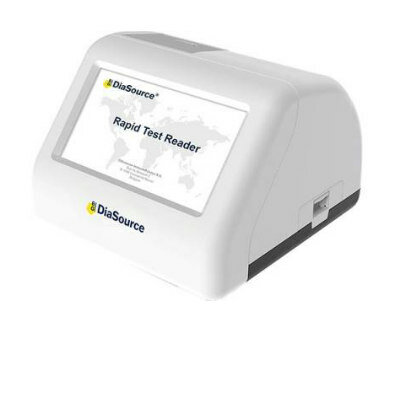Super Resolution Microscopy Catches the Malaria Parasite in the Act
By LabMedica International staff writers
Posted on 21 Feb 2011
Parasitology researchers employing sophisticated image gathering and cell culture techniques have, in real time, followed the process by which the merozoite stage of the malaria parasite Plasmodium falciparum invades human red blood cells.Posted on 21 Feb 2011
Investigators at the Walter and Eliza Hall Institute (Melbourne, Australia) used fluorescence, three-dimensional (3D) structured illumination, and immunoelectron microscopy of filtered merozoites, to analyze cellular and molecular events underlying each discrete step of the invasion process. The imaging technology, called OMX 3D SIM super resolution microscopy, is a powerful new 3D tool that enables capturing images of cellular processes unfolding at nanometer scales.
Results published in the January 2011 issue of the journal Cell Host & Microbe revealed that that commitment to the cell invasion process was mediated through merozoite attachment to the erythrocyte, triggering all subsequent invasion events, which then proceeded without obvious checkpoints. Instead, coordination of the invasion process involved formation of the merozoite-erythrocyte tight junction, which acted as a nexus for secretion by a specialized secretory organelle called the rhoptry, surface-protein shedding, and actomyosin motor activation.
"Historically it has been very difficult to both isolate live and viable parasites for infection of red blood cells and to employ imaging technologies sensitive enough to capture snapshots of the invasion process with these parasites, which are only one micron (one millionth of a meter) in diameter,” said senior author Dr. Jake Baum, researcher in molecular biology at the Walter and Eliza Hall. "It is the first time we have been able to actually visualize this process in all its molecular glory, combining new advances developed at the institute for isolating viable parasites with innovative imaging technologies.”
"Super resolution microscopy has opened up a new realm of understanding into how malaria parasites actually invade the human red blood cell. Whilst we have observed this miniature parasite drive its way into the cell before, the beauty of the new imaging technology is that it provides a quantum leap in the amount of detail we can see, revealing key molecular and cellular events required for each stage of the invasion process.”
Related Links:
The Walter and Eliza Hall Institute













